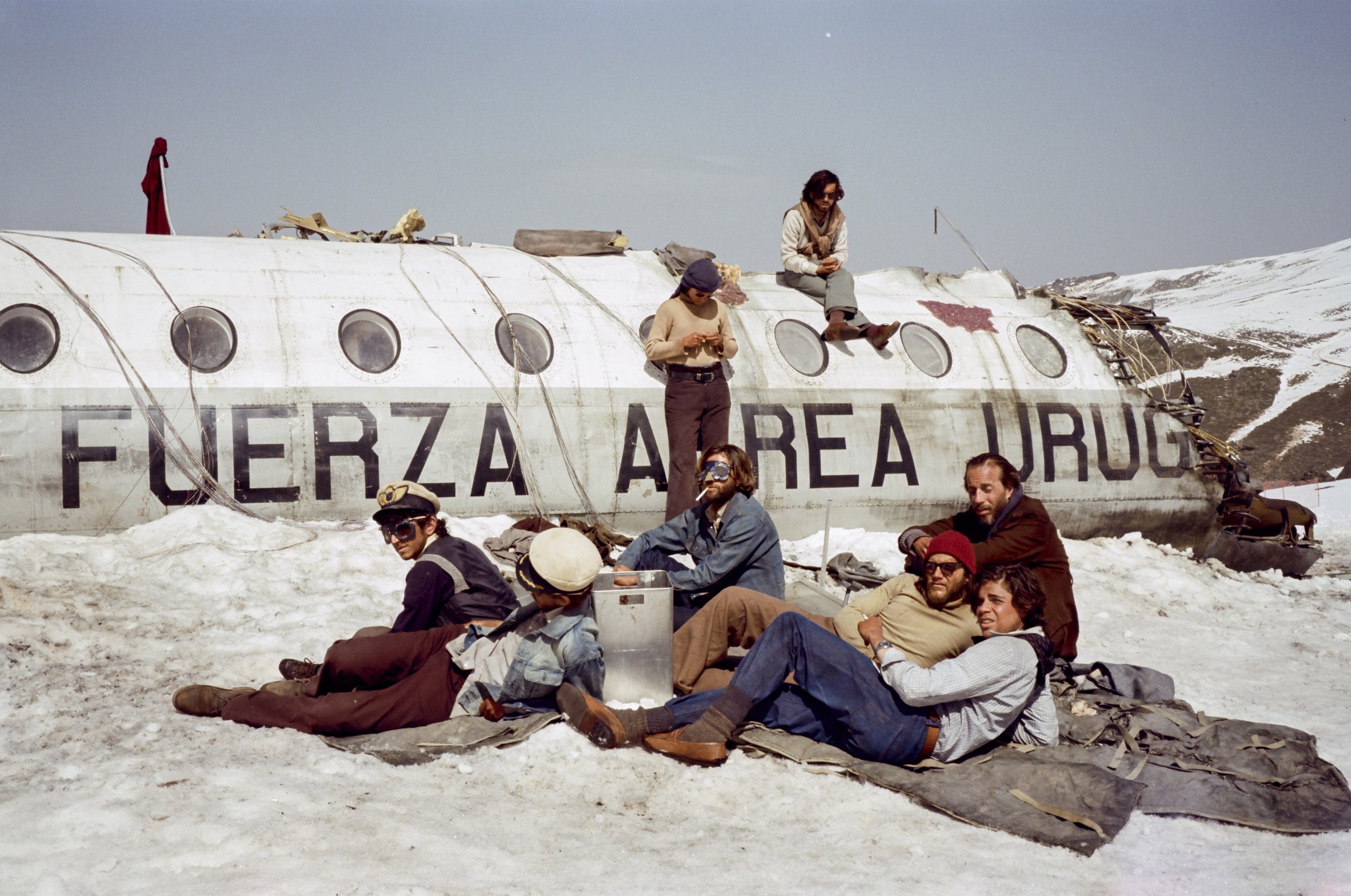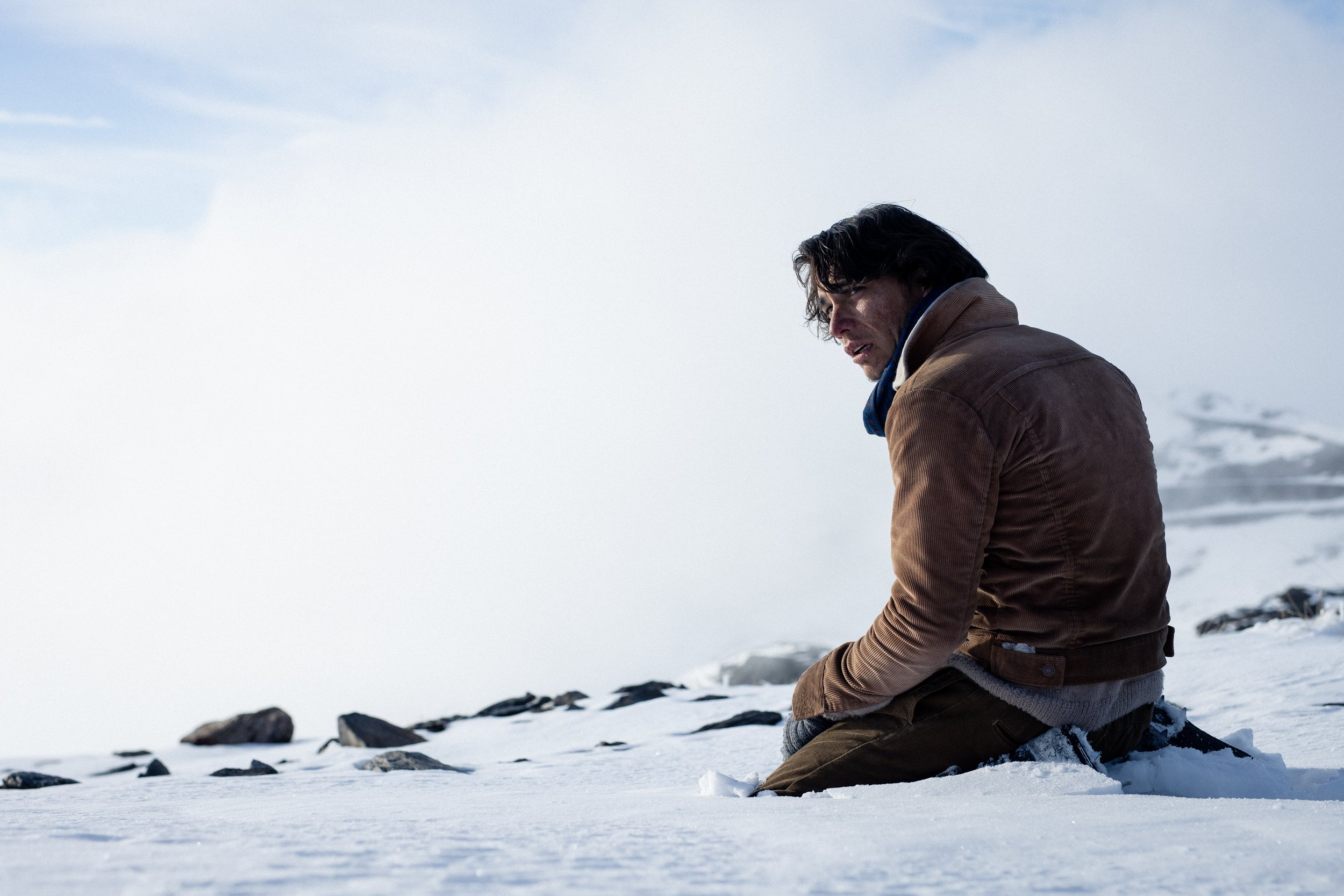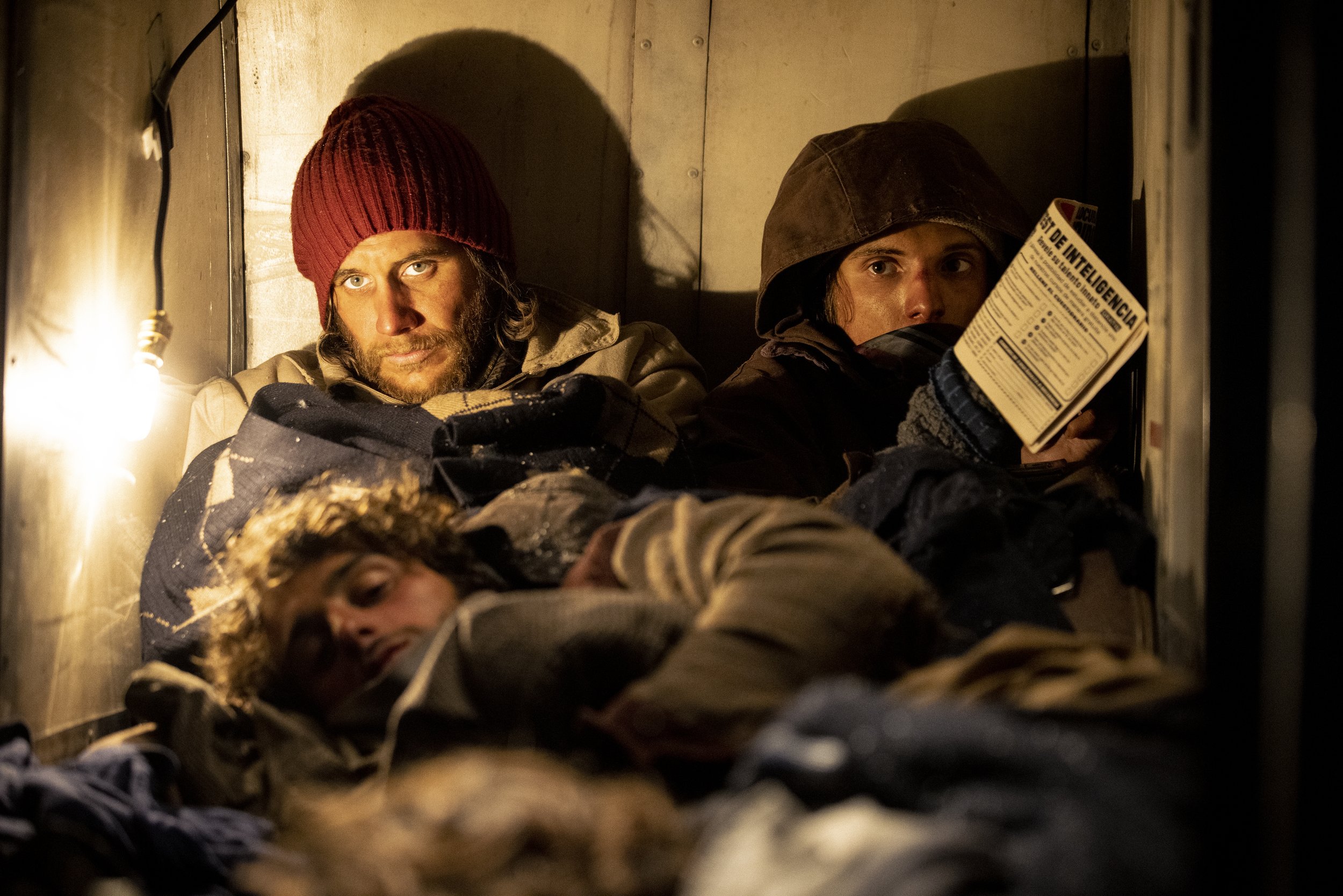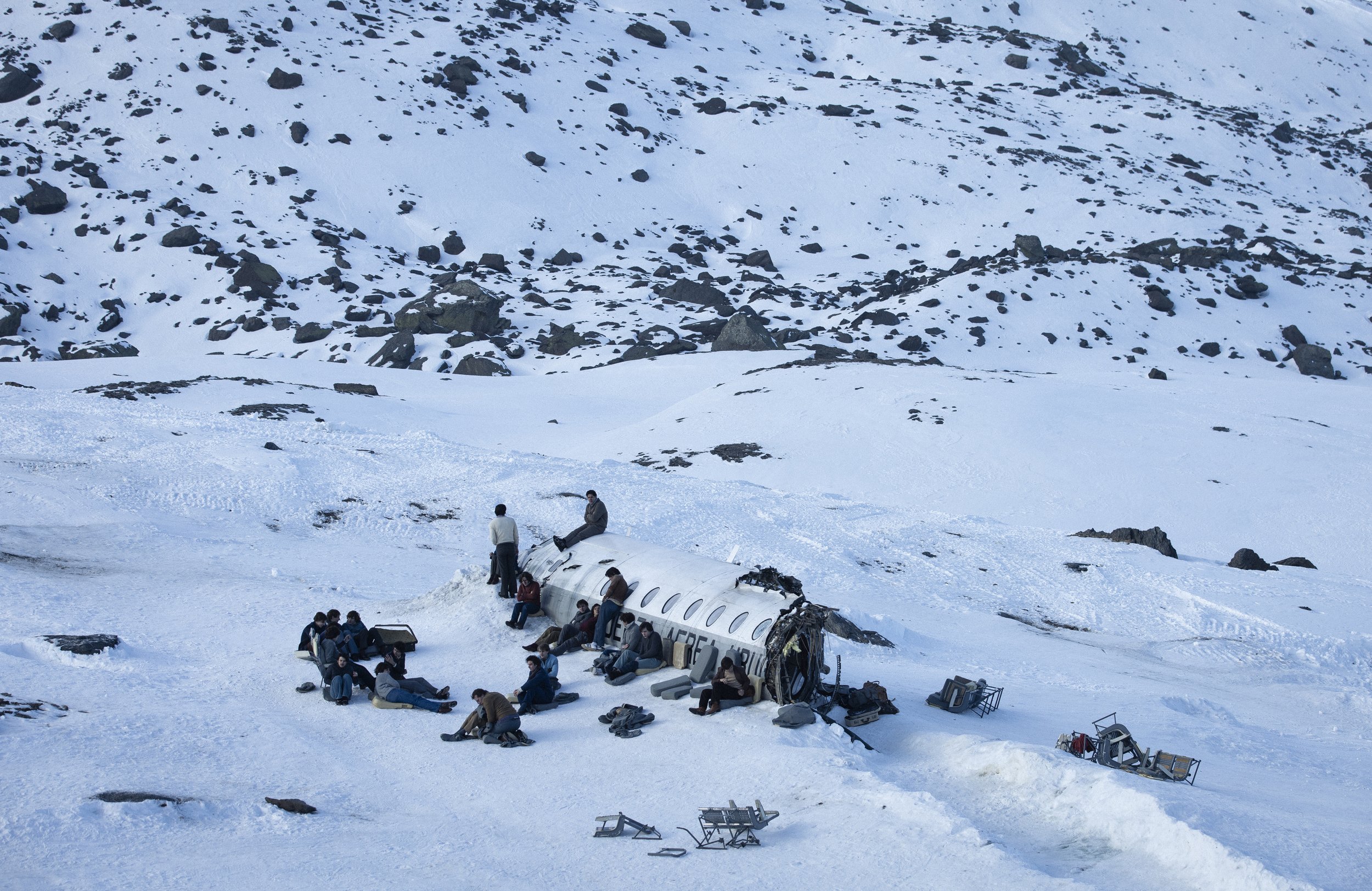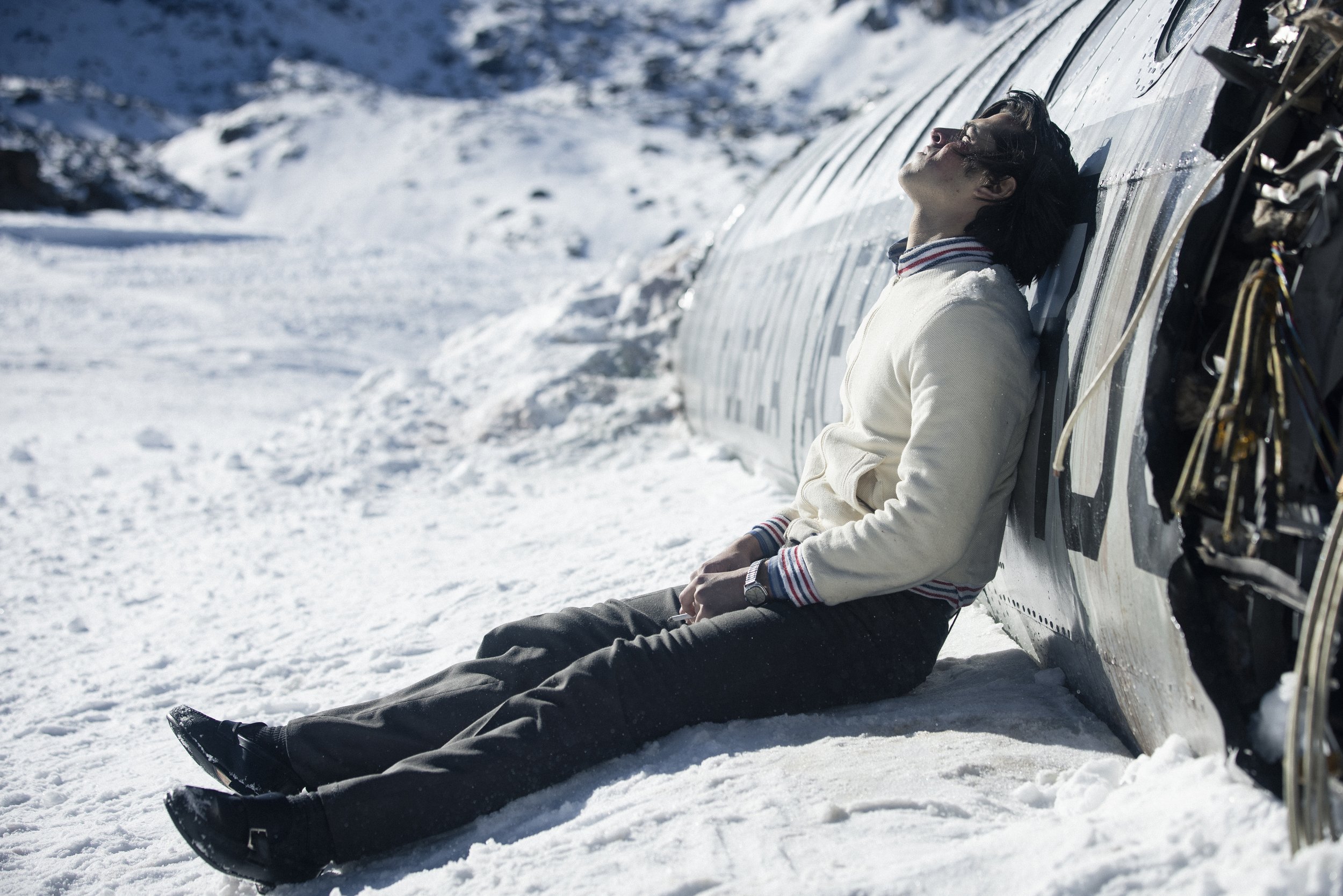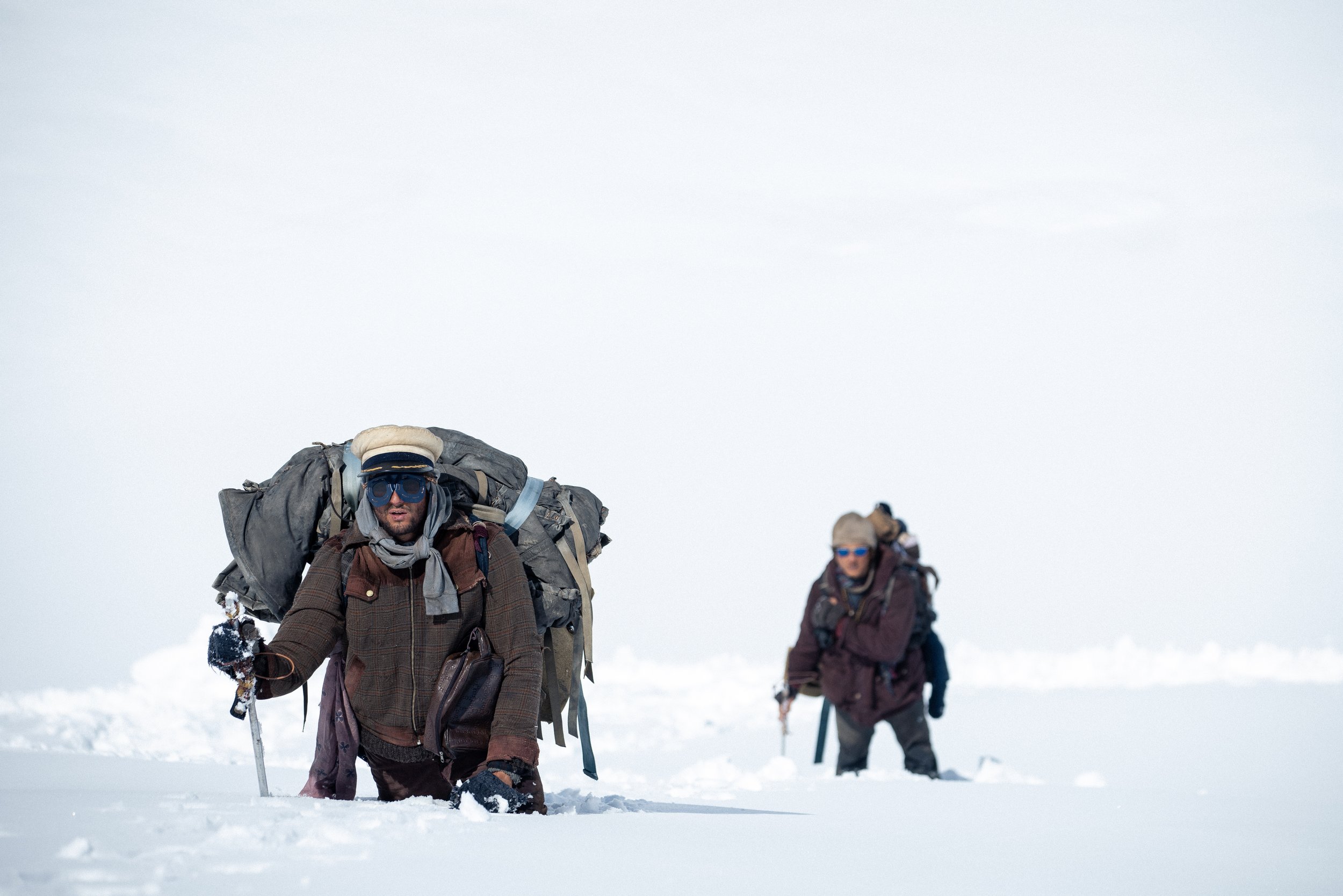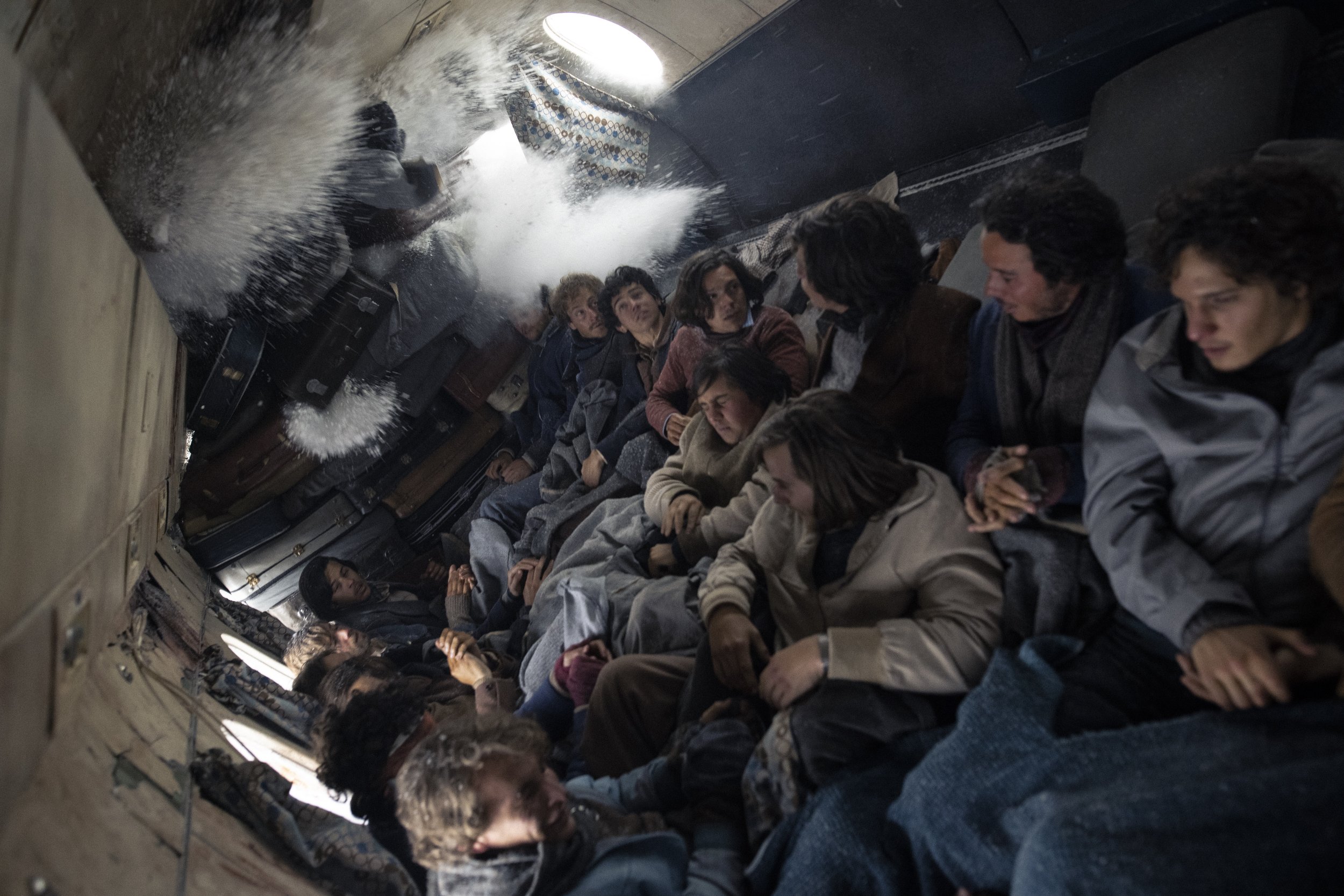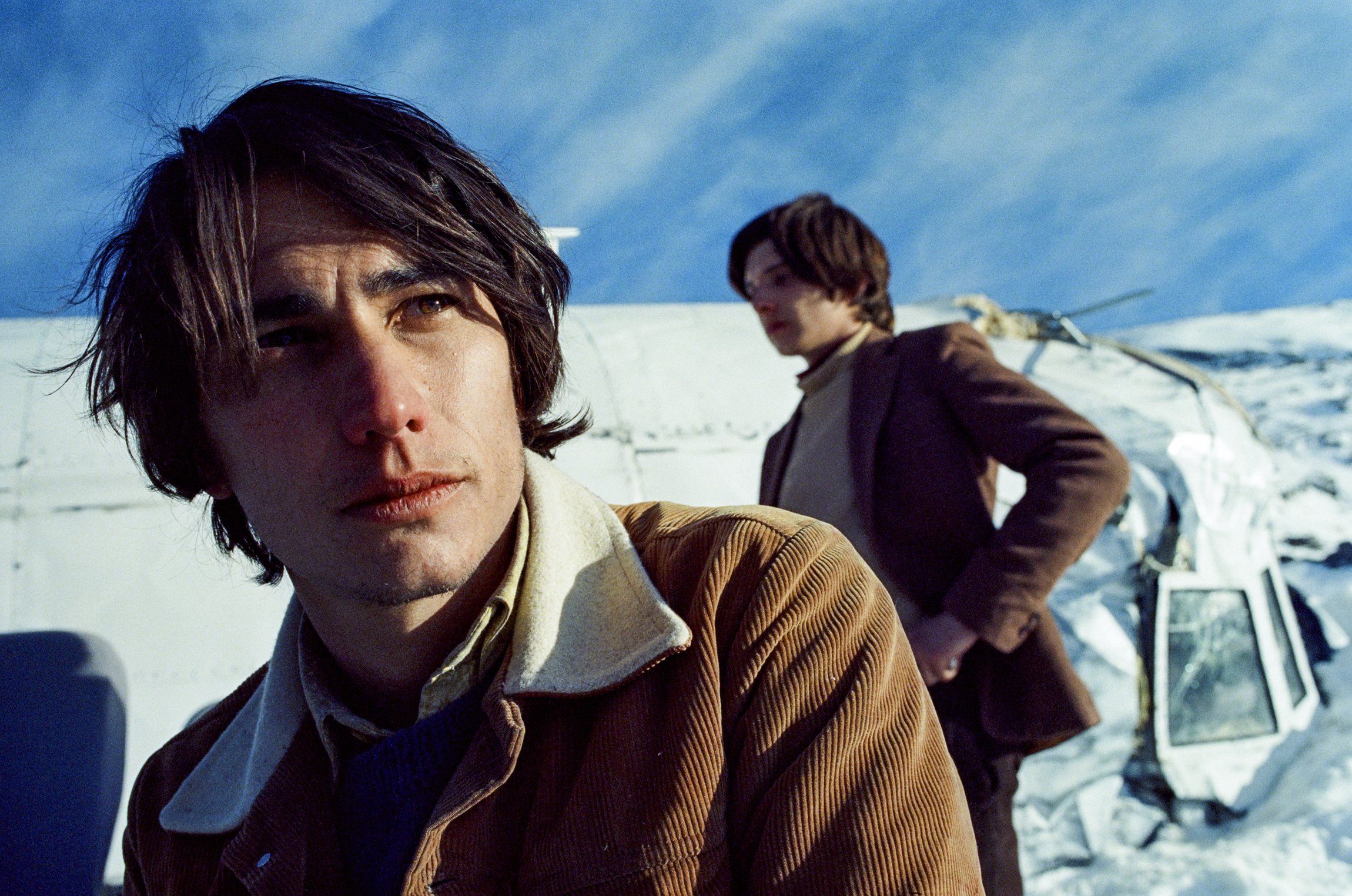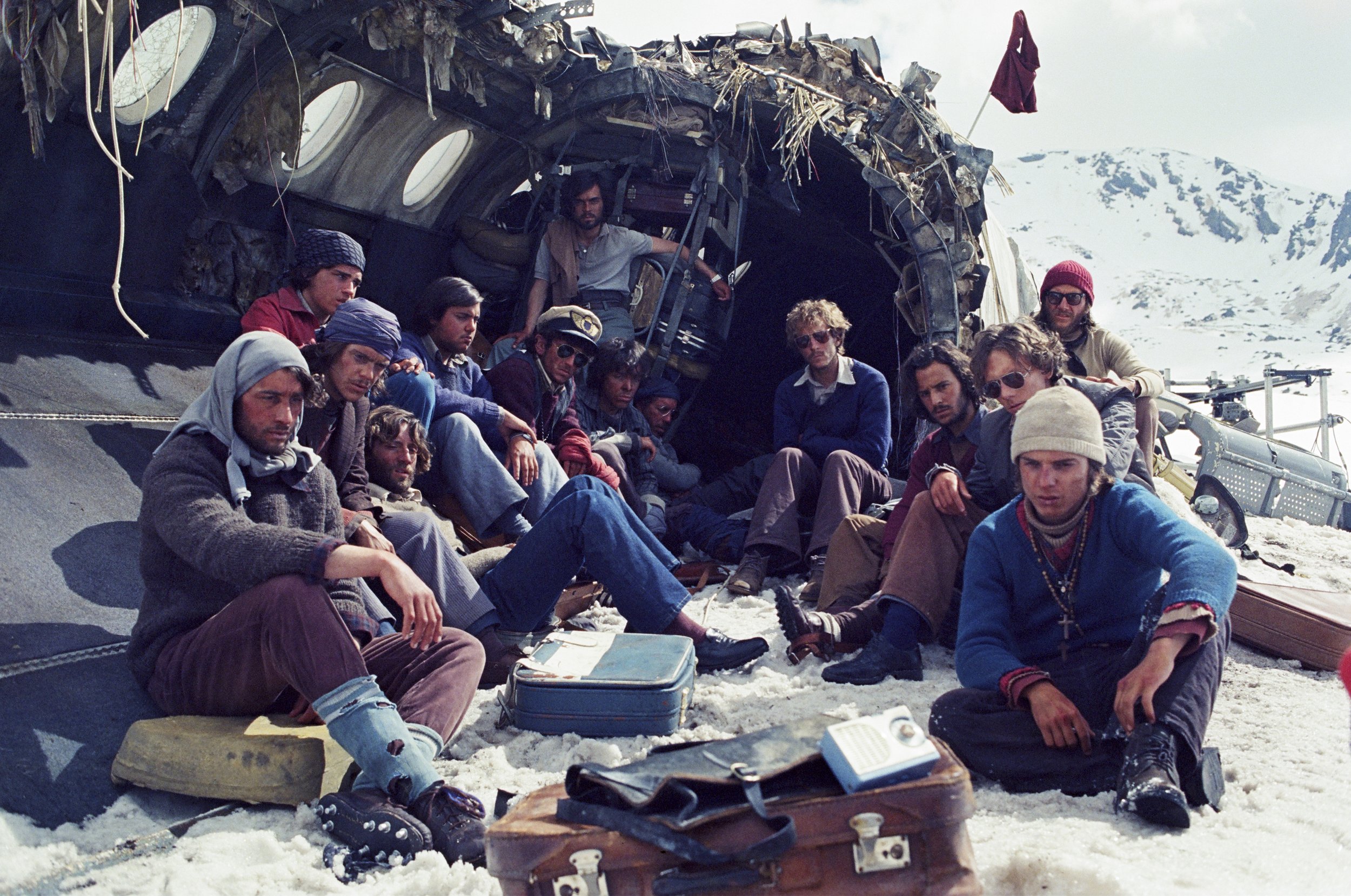MOVIE REVIEW: Society of the Snow
SOCIETY OF THE SNOW– 4 STARS
There are certain subject matters that have become known deal breakers for audiences. Across the spectrum of moralities, each individual has a list of avoidances of varying lengths and specifications. For some, it’s the brutal violence or triggered phobias found in the horror genre. For others, it’s the gamut of possible human atrocities inflicted on characters. Almost always, it’s when the movies on those touchy topics are depicted in ways that feel too real, despite what should be a clear use of dramatic license. Society of the Snow, playing in limited theatrical release before arriving on Netflix in January and representing Spain for the Best International Feature category at the Academy Awards, is going to be one of those movies.
LESSON #1: THE EFFECTS AND APPRAISALS ARE INTENTIONAL– As difficult as those movie experiences are, audiences need to know provoking those feelings is wholly intentional. The fact they can achieve those overflows of discomfort, sympathy, or other emotions in between counts as successful exercises of those intentions. If anything, movies like Society of the Snow stand as specific tests. They are important personal explorations that gauge or remind each viewer the stamina levels of their emotions and constitution.
Society of the Snow is what this writer calls a “thank your lucky stars” movie. It depicts the kind of true story experience that is frighteningly unfathomable to comprehend. You watch it constantly trying to determine what you would do in the characters’ places and reach an overwrought point where all you can do is, hence the nickname, “thank your lucky stars” you didn’t have to go through what you saw on-screen echoing history. The survival you watch fuels and trumps your own. Nevertheless, like 1993’s Alive illustrating the same event, Society of the Snow is the kind of film you watch once with great respect but cannot muster the emotional courage or moral constitution to watch again. However, that one viewing changes you because the film hits chords of fortitude so strongly that it is, from then on, unforgettable.
Directed by J. A. Bayona and based on the La sociedad de la nieve by Pablo Vierci, Society of the Snow chronicles the infamous 1972 crash of Uruguayan Air Force Flight 571 in the Andes Mountains of Argentina that departed Montevideo, Uruguay en route to Santiago, Chile. The twin-engined Fairchild FH-227D was carrying 45 total passengers and crew, most of which members of the Old Christians Club rugby union team and their families. Over the course of 72 harrowing days, only 16 of those 45 people survived after two of them, Nando Parrado and Roberto Canessa, ventured 38 miles in ten days without gear to Chile to find help and secure a rescue.
There are those uninformed of this disaster reading this review who are already doing the math as to how anyone, let alone 16 people, could survive that long after a plane crash in high altitude conditions and extremely limited resources. They are right to open enormous curiosity. Alas, those who have seen Alive or know the event’s infamous notoriety were already braced for what is coming. The ghastly answer in Society of the Snow is cannibalism. Yes, I felt your shiver too from here.
LESSON #2: WHAT COULD OR WOULD YOU DO?-- As abrupt as the terrible and spectacularly recreated plane crash itself, introducing the very notion of cannibalism becomes precisely Society of the Snow’s trait of challenging, deal-breaking subject matter. A viewer cannot help but ask themselves could they or would they be able to approach that controversial decision if they were in that given situation. The ease or difficulty of your response becomes quite telling, and (hopefully) leans right into the aforementioned “thank your lucky stars” realm of gratefulness.
LESSON #3: THE GAP BETWEEN A MIRACLE AND A TRAGEDY– Society of the Snow knowingly speaks to and swings a pendulum between “miracle” and “tragedy” matching the scope of the incredible actual story. For better or worse, both of those phenomena involve humanity in their rawest form, meaning the observed reactions to miracles and tragedies garners the same stoked sincerity. J. A. Bayona eases viewers into this arduous ordeal as best he can with the necessary mortal fragility in mind and at heart to avoid any derision.
The warmth of Society of the Snow is guided by a central, thoughtful narration from team member Numa Turcatti, played by Enzo Vogrincic Roldán, and features a wide-eyed cast of predominantly new actors from Uruguay and Argentina speaking their native Spanish. Roldán leads a few selected standouts in the ensemble that include Matías Recalt and Agustín Pardella as Canessa and Parrado– the two who embarked on the climactic hike out of the Andes– and Diego Vegezzi as Marcelo Pérez del Castillo, the rugby team captain who played an early leadership role.
Much like Paul Greengrass’s United 93, the use of unknown performers creates a focused effect on character purity devoid of distracting star power. Unskilled survival amateurs endured these 72 days, meaning its fitting that each cast member put through this wringer shares the gravity. Screen presence is earned as these actors become the faces that emboss your reactions and memories, especially when the overwhelming uncertainty and death toll rise. To hear them extol the mantra of “There is no greater love than to give one’s life for their friends” is truly moving. Guided by an impactful musical score by Academy Award winner Michael Giacchino, the solemnity of it all is enormous.
Backing that humble, intimate passion in Society of the Snow is an equally tremendous level of technical prowess from Bayona and his production teams. The time-marked dates and on-screen notes of casualties as they are discovered present a borderline forensic accuracy. That attention to honorable detail spread to all prongs of the breathtaking location shoot (filmed in Spain’s Sierra Nevada and near the actual Andean crash site), from the costume and production design creations to the astonishing prosthetic makeup effects blurring movie-making illusions. Still, lifting above possible thrills, Bayona’s keen grasp of emotional foundation seen in The Impossible and A Monster Calls before the franchise bug bit him with Jurassic World: Fallen Kingdom returns in force to make this film as uplifting as it is sorrowful.
LOGO DESIGNED BY MEENTS ILLUSTRATED (#1165)

